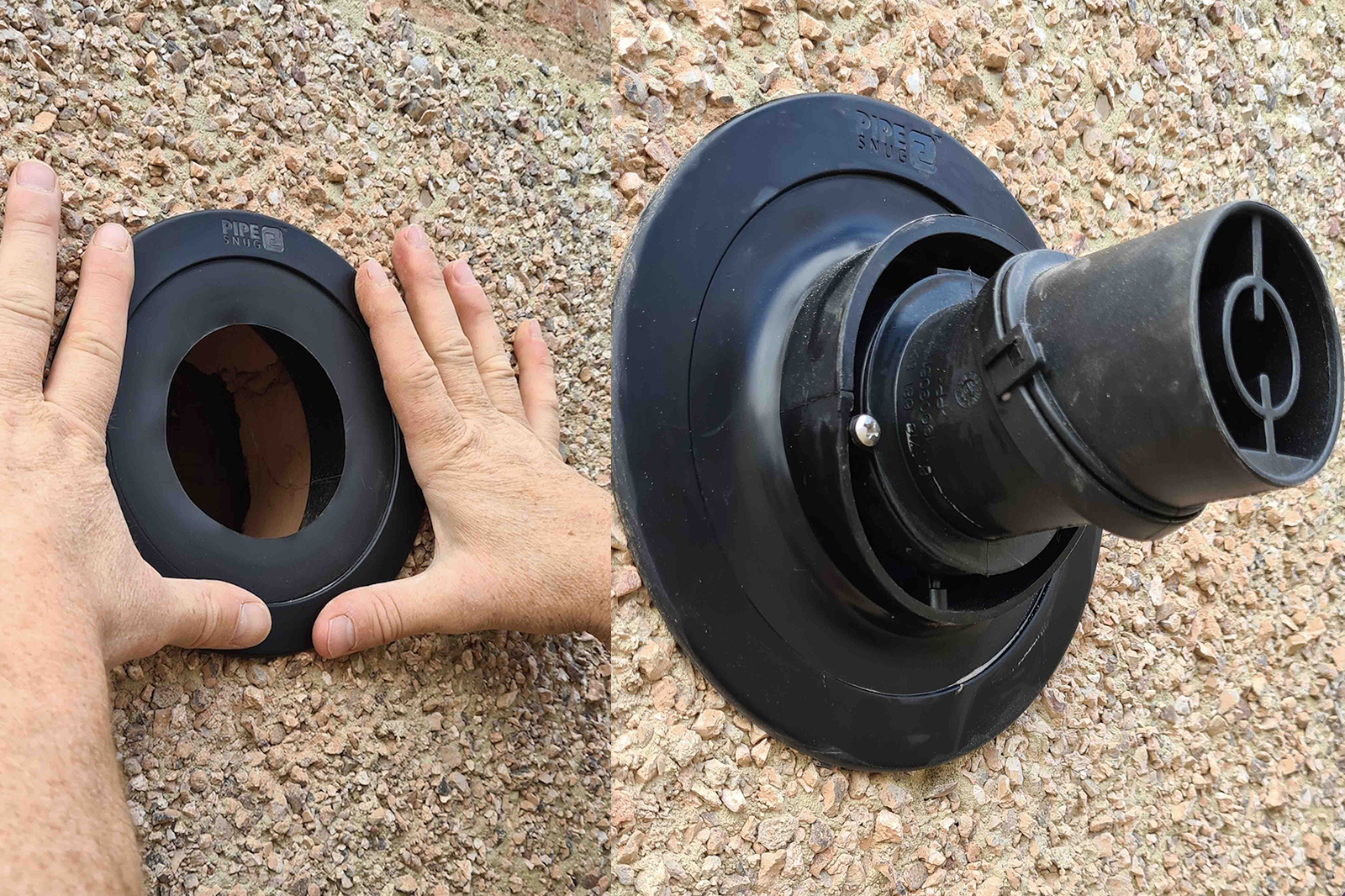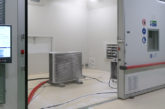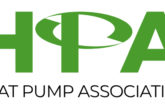
2022 marks the fifth anniversary of PipeSnug, a quick and straight-forward solution for making good around pipework. PHPI chatted with creators Chris Burdett and Alex Lever to discover how the product came about and how it has grown over the years.
How did you first get the idea for PipeSnug?
Chris: The PipeSnug concept came to me out on site one day when I was preparing to mortar around a waste pipe for what seemed like the millionth time. I realised a simple fitting would save so much time in mixing mortar or siliconing around the pipe, as well as blending into the fabric of the building visually.
Alex: I knew Chris through the school our children went to. I have launched several businesses before and when Chris told me about PipeSnug I loved the idea, we became business partners and that is when we began to move forward and bring the product to market.
Chris: As a tradesperson I wanted to solve a problem for those in the construction industry. We estimated that an average plumber who is fitting around five bathrooms a month could save around £150 by using PipeSnug. A heating engineer or company doing 15 to 20 boilers a month could save up to £800 per month in reduced labour cost and materials too. With that, we went for it.
How long did it take to develop the product?
Alex: It took around 12 to 18 months before we were ready for launch, and in that time we were refining the design, testing prototypes and finding the right suppliers to work with. One of the major hurdles was to get the product patented, which is a long process – but we got there!
What are the main situations in which PipeSnug can be used?
Chris: The products are designed so that any plumber or builder can use it to seal the hole where a pipe exits a wall. PipeSnug replaces messy mortar, silicone, tape and expanding foam. It is quicker to install, cheaper, neater and cleaner than pointing mortar, silicone or expanding foam. It fits in seconds.
Alex: Like PipeSnug, FlueSnug also removes any need for pointing, can be installed in seconds and snugly fits the 152mm core-drilled hole in the wall through which the boiler flue exits. PipeSnug and FlueSnug prevent heat escaping, act as a barrier to drafts, damp, insects and pests and give a great, neat finish as they can be both be used both inside and outside the property.
Chris: You can also install FlueSnug from the inside of the wall to the outside as it’s flexible enough to be folded through the core drilled hole. That means you can also save money on scaffolding and remove a health and safety risk if the boiler is being installed at height.
Launching a new product is always tricky, how did you get the word out to the plumbing and heating community?
Alex: Firstly, we were keen to create a strong, easily recognisable brand. The reaction from the industry was really receptive and we launched PipeSnug through the trade press. PHPI was really supportive and visited us out on site to profile us and look at the product.
Chris: We also exhibited at trade shows, worked with influencers and pushed PipeSnug on social media. We secured merchant distribution and all of this work, plus word of mouth led to some really big successes for us. Local Authorities began to use PipeSnug on their housing stock and when we launched FlueSnug, which seals around flues, it was used by major housebuilders to ensure an airtight seal to maintain energy efficient levels.
Alex: A big moment was when FlueSnug was endorsed by the major boiler manufacturers, including Worcester Bosch and Ideal Heating.
Do recent changes to the Building Regulations mean more properties will be fitted with PipeSnug?
Chris: Yes, in December 2021 the Part L of the Building Regulations were changed and it now requires pipe seals and grommets to be used around pipework. PipeSnug is the only all-in-one solution which meets Part L’s requirement to seal around pipework inside and out, without the need for sealant, mortar or expensive air sealing tape.
Alex: The changes to Part L were designed to help the UK meet its Net Zero targets. PipeSnug and FlueSnug form an airtight seal against the wall where pipes enter and exit a building. So they not only save plumbers time, money and mess, but they also keep warmth in and energy costs down for homeowners.
Chris: They look great too! With PipeSnug you know you can meet the Regs easily, and it saves so much time and therefore money for plumbing and heating contractors too. Job done!
What options are currently available?
Alex: PipeSnug is available in 32 and 40mm for solvent-weld waste pipes and fit a 52mm core drilled hole. The 110mm version fits a 152mm core drilled hole and fits all push-fit and solvent weld soil pipe fittings. The soil and waste versions are available in black, white and grey.
Chris: FlueSnug works for all 100mm boiler flues and fits a 152mm core drilled hole. It is available in black and white.
What are your plans for the next five years?
Alex: We have ambitious plans to invest and launch new versions to cover different sizes and applications in the coming months as demand rises due to the changes to Part L. We want PipeSnug to become the de facto method of sealing around service penetrations. We are also looking to expand sales more outside the UK as we have international patents.
Chris: Yes, it’s an exciting time and we have other products we are working on, all of which are focused on solving problems in the construction and plumbing sector.
Read our first ever story on PipeSnug (from March 2017) here…












